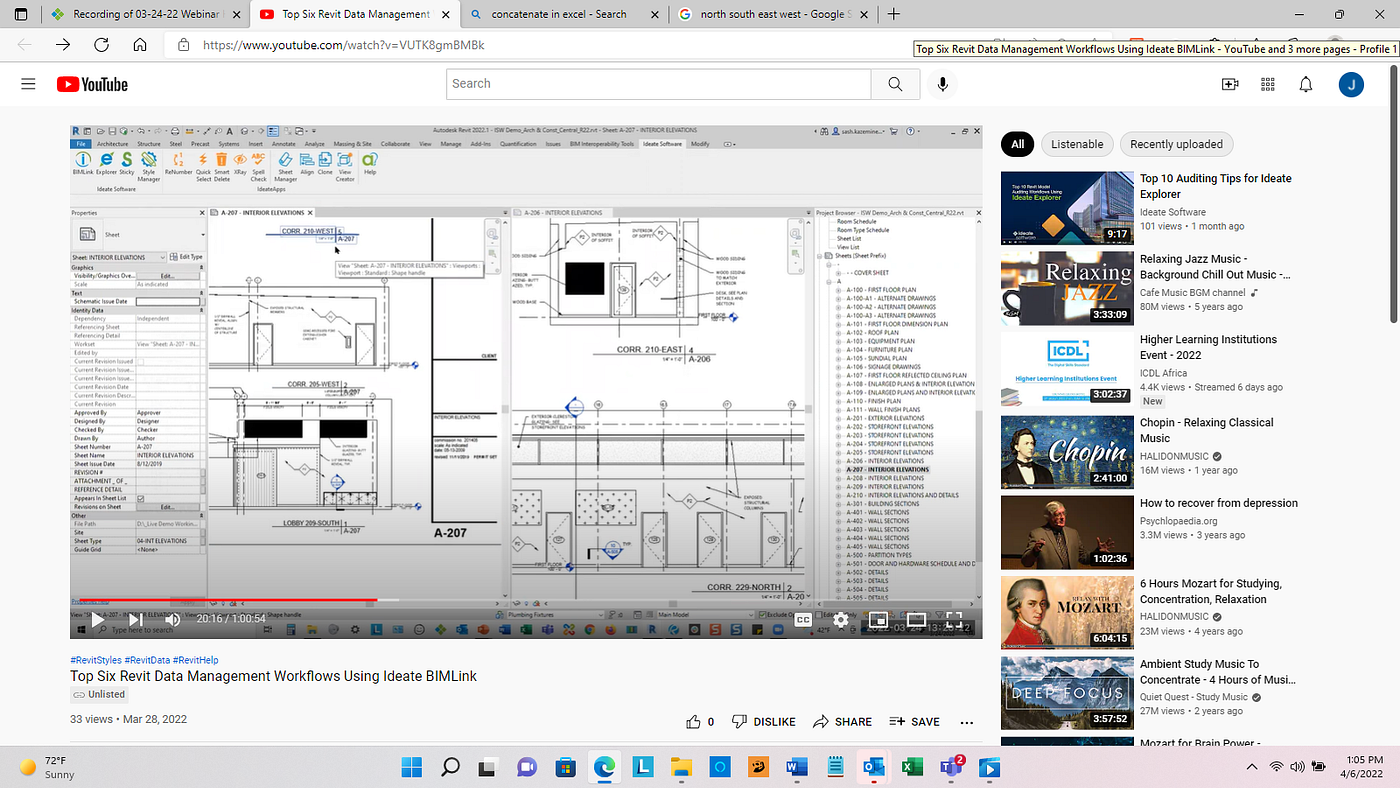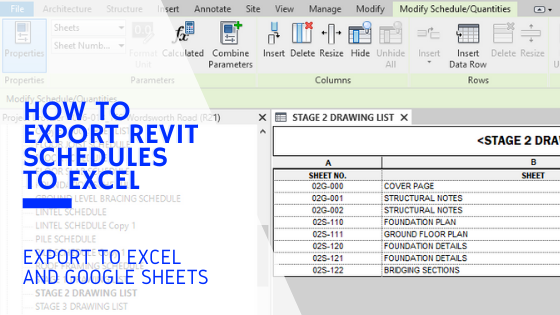Maximize Efficiency with Top-Rated Revit Plugins
Wiki Article
Breaking Barriers: Excel Importation Techniques for Advanced Revit Users
Are you an innovative Revit customer looking to take your abilities to the following level? In this article, we will certainly reveal you how to break obstacles by leveraging Excel for importation in Revit. Discover various data importation methods and master Excel assimilation to improve your Revit modeling abilities. With our tips and techniques, you can conquer importation challenges and come to be a true specialist in using Excel for your Revit projects. Prepare to master your Revit trip!Advanced Revit Users: Leveraging Excel for Importation
You can easily take advantage of Excel for importation as an innovative Revit customer. Excel is a powerful device that can significantly boost your process and efficiency in Revit. With its capacity to handle big quantities of data and do complex computations, Excel can be a beneficial possession in handling and organizing your job details.One way to take advantage of Excel for importation is by making use of the "Link Excel" function in Revit. This feature enables you to connect an Excel spreadsheet directly right into your Revit task, enabling you to update and synchronize information in between the two programs. When dealing with timetables or tracking changes in your project., this can be especially beneficial.
An additional means to make use of Excel is by utilizing the "Import/Export" feature in Revit. This function enables you to import and export information in between Revit and Excel, giving you the versatility to function with information in both programs. You can import information from Excel into Revit to develop elements such as doors, walls, or areas, and you can additionally export information from Revit to Excel for additional evaluation or coverage.

Exploring Data Importation Methods in Revit Making Use Of Excel
Checking out exactly how to import data from Excel into Revit uses effective techniques for incorporating details. When you import data from Excel, you can perfectly transfer data such as room routines, material lists, and equipment information right into your Revit task. This procedure enables you to conserve time and initiative by preventing hands-on information access.To import information from Excel into Revit, you can utilize the "Import/Export" feature. This feature allows you to map the Excel information areas to the equivalent Revit criteria, guaranteeing that the information is appropriately appointed within the design. By choosing the appropriate import alternatives, you can regulate exactly how the data is imported and just how it connects with your task.
One more method for importing information from Excel into Revit is by making use of Dynamo. With Eager beaver, you can produce personalized scripts that import information from Excel and control it within your Revit project.
Mastering Excel Integration for Advanced Revit Modeling
One crucial strategy is importing data from Excel spreadsheets directly right into your Revit version. With a few basic actions, you can map the Excel columns to the corresponding Revit parameters and import the information properly.An additional beneficial method is exporting data from Revit to Excel. This enables you to draw out details from your version, such as schedules or material amounts, and evaluate it in Excel utilizing solutions, graphes, or various other effective tools. By leveraging the capabilities of Excel, you can carry out complicated computations, develop custom records, and gain beneficial insights into your task.
Along with data transfer, Excel integration can automate repeated tasks in Revit. By creating macros or scripts in Excel, you can automate processes like creating views, producing sheets, or applying typical families - revit tool. This not just saves time but also makes sure uniformity throughout your job
To grasp Excel integration in Revit, it is essential to understand the information framework and exactly how Revit communicates with Excel. By acquainting on your own with the readily available devices and methods, you can unlock the complete capacity of Excel combination and take your Revit modeling to the next degree.
Conquering Importation Challenges: Excel Techniques for Revit Experts
When getting rid of importation challenges, it is very important to be acquainted with effective Excel strategies that can profit professionals in Revit. As an advanced Revit customer, you comprehend the importance of perfectly importing information read review from Excel right into your jobs. Nevertheless, you may run into different challenges in the process. By utilizing efficient Excel strategies, you can conquer these challenges and boost your efficiency.
Another beneficial strategy is utilizing the "Transpose" feature in Excel. This allows you to convert information from rows to columns or the other way around. When importing data into Revit, this can be specifically handy when you have data in an upright layout in Excel, but you need it to be in a straight layout in Revit.
Additionally, utilizing Excel solutions such as VLOOKUP and INDEX-MATCH can significantly help in mapping information from Excel to Revit. These formulas enable you to browse for details values in Excel and get corresponding information from one more column. This can save you effort and time when importing huge datasets into Revit.
Excel Information Importation Advice for Advanced Revit Users
By acquainting yourself with efficient Excel ideas and tricks, you can boost your data importation procedure as an advanced customer of Revit. Excel is a powerful device that can greatly help with the importation of information into Revit, saving you time and increasing your efficiency. One valuable suggestion is to make use of the "Text to Columns" feature in Excel to divide information right into different columns based upon a delimiter. When you have information in a solitary column that needs to be split into numerous columns in Revit, this can be especially valuable. In addition, using Excel's "Paste Unique" feature allows you to paste data from Excel right into Revit while keeping formatting, such as cell color or font style. This can be especially valuable when importing data that calls for specific formatting in Revit. One more practical method is to utilize Excel's "Change and locate" feature to promptly make adjustments to your information prior to importing it right into Revit. You can conveniently change particular message or personalities with others, conserving you the time and effort of manually modifying the information in Revit. By using these Excel methods and tips, you can improve your data importation procedure and end up being even much more proficient being used Revit.
Verdict
You have actually now learned additional reading beneficial methods for importing information from Excel into Revit as an innovative user. By leveraging the power of Excel integration, you can streamline your modeling process and overcome any importation challenges that may emerge. With these pointers and tricks, you will certainly be able to understand data importation and improve your Revit abilities. So go on, damage those barriers and master your Revit jobs!
When importing data into Revit, this can be especially helpful when you have data in an upright layout in Excel, however you require it to be in a straight format in Revit.
Moreover, utilizing Excel formulas such as VLOOKUP and INDEX-MATCH can greatly assist in mapping information from Excel to Revit. Additionally, using Excel's "Paste Special" function permits you to paste information from Excel into Revit while maintaining formatting, such as cell color or font design.
Report this wiki page